Marketers aim to spread the word about their brand to a wide audience, and they often do this by trying to make their content go viral. Viral marketing is a technique, which marketers use intentionally to spread their message quickly. Just like a biological virus, a viral marketing campaign spreads from one person to another, resulting in a large number of views, substantial amount of social shares and remarkable brand awareness.
A viral marketing campaign should be able to tap into the emotions of the users, especially positive ones like joy and awe.
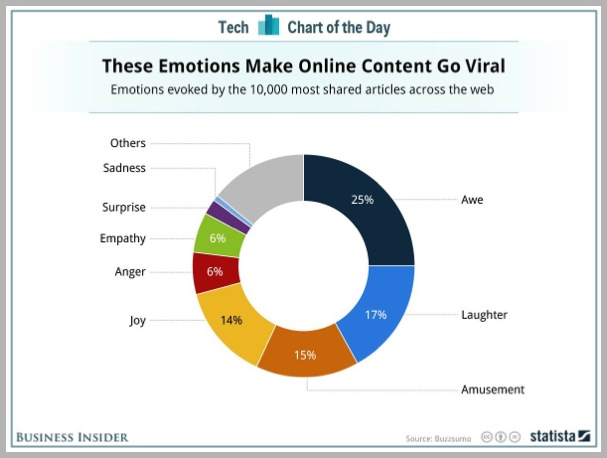
The fact is, very few people know what goes into making a viral marketing campaign successful until it starts to spread. There are, however, some brands, who have understood what makes the audience tick. In fact, there are some consistent elements in such campaigns, which brands can follow. Let’s take a trip down memory lane and have a look at the top three examples of viral marketing campaigns over the past years. There is a lot you can potentially learn from them as they exactly know how to resonate with the target audiences.
1. Old Spice “The Man Your Man Could Smell Like” Campaign
Old Spice is still the king of viral marketing with its humorous and out-of-the-box ad campaigns. It came out with its brand character, the Old Spice man who appeared in “The Man Your Man Could Smell Like” campaign in 2010. The Old Spice man Isaiah Mustafa created a stir with his ad, which was created to appeal to the female audience and give a subtle message to men to buy Old Spice. The ad video got amazing positive reviews and YouTube views, garnering more than 54 million views to date on YouTube.

A few months later after the ad was launched, the ad agency Wieden + Kennedy made a series of more than 200 short ads featuring Isaiah Mustafa, responding to comments and questions posted on social media platforms like Twitter and Facebook. The campaign resulted in an increase in Twitter followers by more than 1,000 percent an over 6 hundred thousand people on Facebook liked the ads!
Visible Measures compared the “Old Spice Responses” with the viral videos of that time, and the campaign was a clear-cut winner.
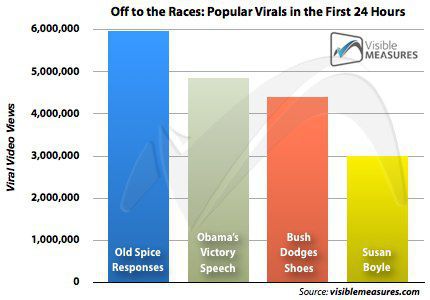
Key Takeaways
-
Wieden + Kennedy very well knew how to use social media to engage customers. As a business, you too can use social media platforms to engage customers in an interactive way rather than using the same techniques, which customers are already exposed to.
-
Procter & Gamble did not offer any discounts or ask buyers to buy Old Spice, it just gave a suggestion and managed to catch the attention of consumers through the ad. Buyers might buy the Old Spice body wash without consciously realizing why they did so! The lesson is to be creative. Use social media channel to foster brand loyalty in an altogether new way.
-
The marketing campaign was no doubt creative, but the level of integration between various channels like social media and television was fantastic! You too can approach various marketing channels holistically and use different platforms in ways they are best suited to.
-
In 24 hours the Old Spice man responded to the selected Tweets with YouTube videos. The principle of real-time response on Facebook and Twitter can work for your business too, to keep the conversation rolling.
-
By personalization, you can win the trust of your audience. Back then, people didn't expect to get an answer to their questions on social media. This is where Old Spice campaign broke through. Custom YouTube videos as a reply to the tweets amazed the global audience!
-
The company replied to the tweets of celebrities like Kevin Rose, Alyssa Milano, Justine Bateman, Rose McGowan, Kelvin Rose, etc. to gain popularity. Below is the tweet by Justine Bateman:
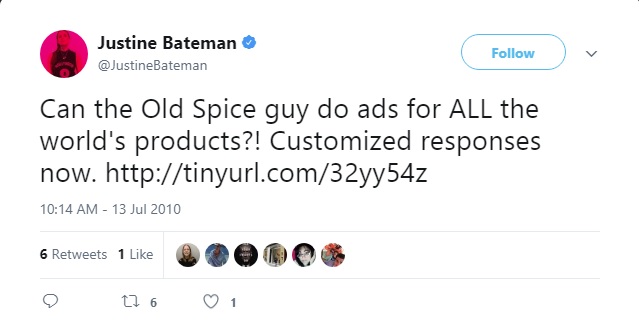
This is how the Old Spice man responded to the tweet:

By replying to the tweets of celebrities, the company could reach their target audiences in a massive way. You too can take the benefit of the large network of influencers. Influencers can easily spread your marketing message to their followers on social media.
2. Dove “Real Beauty Sketches” Campaign
In April 2013, Unilever, with its ad agency Ogilvy & Mather Brazil, came out with Dove Real Beauty Sketches campaign to empower women about how they look. The campaign was a short film featuring an FBI-trained sketch artist Gil Zamora. He was shown sketching two portraits of women based on the description given by them and on how they were perceived by strangers. Neither did the artist himself look at the appearance of the women, nor were the women aware of the social experiment.
The portraits were then placed side-by-side, and notable differences were found between them. The portrait based on the stranger’s description was more attractive than the portrait based on self-description. The message that the campaign aimed to convey was “You are more beautiful than you think.” Below is the video of Dove Real Beauty Sketches campaign:

The video was viewed more than 114 million times in the first month itself and was uploaded in 25 languages to 33 of the Dove's YouTube channels to reach consumers in over 110 countries.
According to Visible Measures, the Dove Real Beauty Sketches video was the most watched Internet video of 2013. There was a tremendous increase in its YouTube subscribers and Twitter and Facebook followers. The video not only went global and viral but also won 19 Lions including a Titanium Grand Prix.
The campaign didn’t target Dove’s products but instead focused on changing a woman’s perception of how she sees herself, also changing the way how Dove is viewed as a company. It is said that “Woman aged between 18-34 are twice as likely to think highly of a brand that made an empowering ad and nearly 80% more likely to like, share, comment, and subscribe after watching one.” Through the video, Dove wanted to make women realize that they are overly-critical of themselves to make them feel better about their appearance.
Key Takeaways
-
Dove Real Beauty Sketches campaign proves that marketing your company doesn’t only include promoting your products and services. Instead, consumers get attracted towards a brand that references its culture. Buyers come across ads for various products and services. Thus, putting a social message across them becomes compelling.
-
The campaign became viral because it could connect to the audience emotionally. People could relate to the concept of the video. The idea was original, and the content was enticing without pushing the products. The ad encouraged social conversation and sensitivity around the beauty of a woman. It empowered women, evoking feelings of warmth, joy, and confidence. Empowerment is a powerful tool, which can enhance the brand image of your company. So build an uplifting relationship with your audience.
-
When you start your marketing campaign, it is crucial to create the best possible content to differentiate your brand. Promotion should be your next step. For promoting the brand effectively, Dove had strong social media strategies, which even lead to celebrities and other brands joining the conversation and sharing the video with others. Shareability is a huge factor for making your campaign a success. Involving customers in your campaign and providing them a platform for discussion is an invaluable way to develop customer relationship.
-
When imparting your brand message, addressing your audience directly by using the second-person term “you” ensures a personal touch. By saying “You are more beautiful than you think,” Dove could connect to the audience and show that it cares for each of them. The impact of the campaign was that while buying Dove’s products, people thought they are supporting a social cause.
-
Dove monitored the campaign in real-time, responded to conversations and optimized its activities for better engagement and market penetration, ensuring the video was seen by the right people. It is crucial for you to track the results of your campaign. By using the technology you too can deliver an omni-channel customer experience. Analytics will give you in-depth insights into your customers and capture their buying behavior.
3. ALS Ice Bucket Challenge
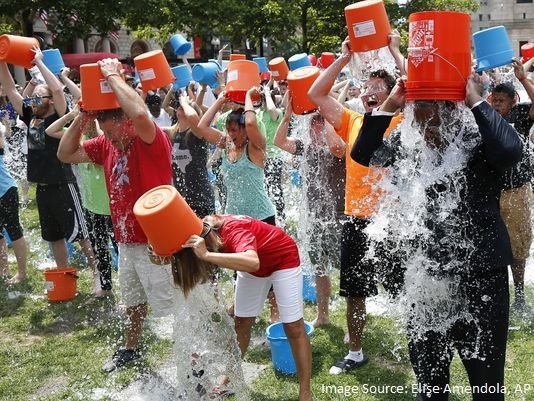
The ALS Ice Bucket Challenge started in 2014, which was an online effort to raise awareness for people with Amyotrophic Lateral Sclerosis (ALS) disease and to raise funds. The campaign was able to raise $115 million in a span of just eight weeks! The challenge for people was to pour a bucket of ice-cold water over their head and challenge minimum three people to do the same and make a donation to The ALS Association.
The campaign became successful and viral with over 17 million people participating in the challenge worldwide. Many celebrities including Bill Gates, George W. Bush, Oprah Winfrey, Tom Cruise, Mark Zuckerberg, Rihanna, Tim Cook, Rafael Nadal, and Cristiano Ronaldo took part in the challenge. Below video shows the Ice Bucket Challenge taken by Bill Gates:

The challenge became viral in social media platforms as well.
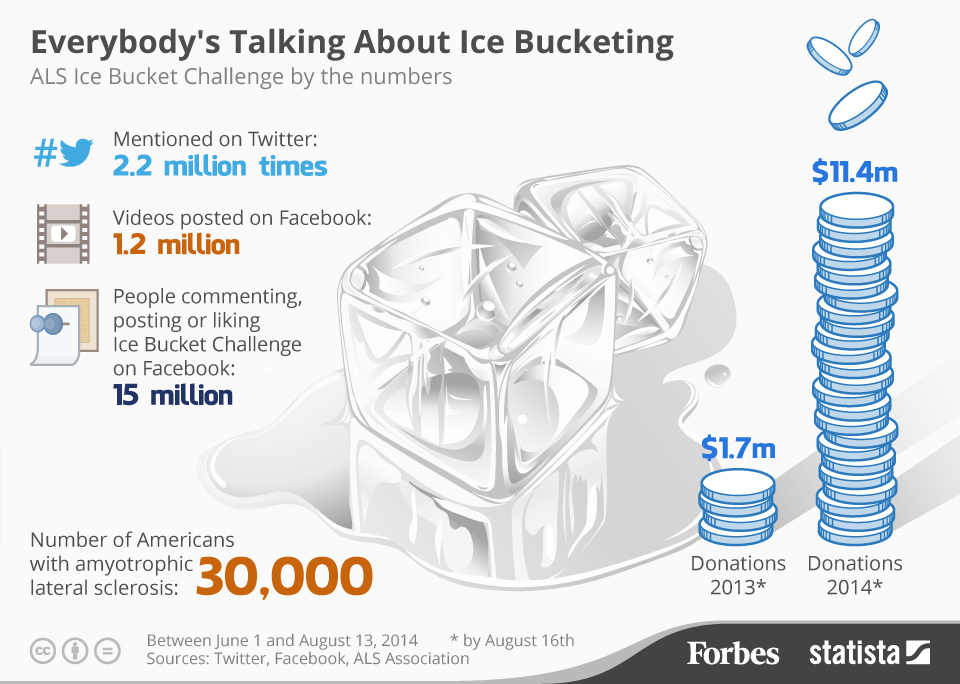
Key Takeaways:
-
Before the challenge, ALS was known to much fewer people. But things changed after the challenge, and it was everywhere on Twitter, Facebook, YouTube, news, events, etc. The reason was the visibility created by the campaign. You need to create awareness about your brand through various marketing channels. People will prefer to buy from you only if they know about you.
-
Ice Bucket Challenge only asked participants to pour a bucket of ice-cold water and donate. The objective was kept simple and clear, and challengers were not required to put in much effort. It is important for you to keep your message direct and simple as customers don’t have the time and patience to go through a lot of content to grasp the crux of your message.
-
The challenge was for a limited time and created a sense of urgency. Participants had 24 hours to accept and complete the challenge. This was the reason why the campaign spread quickly and widely. By offering discounts for a short period and coming out with limited time offers, you can create a sense of urgency for your audience to buy from you.
-
For a campaign to become viral, you need to strike the right emotional chord with your audience. Ice Bucket Challenge evoked a positive and high arousal emotion as it was funny. By keeping your campaign lighthearted, you will be able to connect with your audience at a human level, which can result in better engagement. If you target the right kind of emotions, the chances of your campaign to become viral will increase.
-
Doing something unique and unusual, which hasn’t been done before can also lead to the popularity of your campaign just like Ice Bucket Challenge.
-
The participants were asked to challenge minimum three persons to take the Ice Bucket Challenge. This was one of the reasons why campaign became viral. If one person tells three other people about the challenge, and those three tell the other three, a viral loop is created. By setting a call to action, and asking your audience to share about your campaign with others, you too can keep your campaign alive.
-
By attracting celebrities in the challenge, the campaign was widespread as their followers joined in too, leading to worldwide coverage. Celebrities voluntarily created videos and made contributions, leading to the virality of the campaign. By including influencers in your campaign, you too can reach masses.
Final Note
By increasing the exposure of your brand and delivering value to your audience, you have a stronger likelihood of getting the success you need in your viral marketing campaign. Awareness is required even if the content is great so that people can share and make it popular. You need to create something that pulls in the kind of attention that will spread.
There isn’t an exact formula to make your viral marketing campaign a success. In fact, going viral is one of the most difficult things for marketers. It isn’t possible to perfectly predict what can make or break a viral marketing campaign. However, the above tips should certainly be on your radar to improve engagement and increase your chances of becoming viral.
